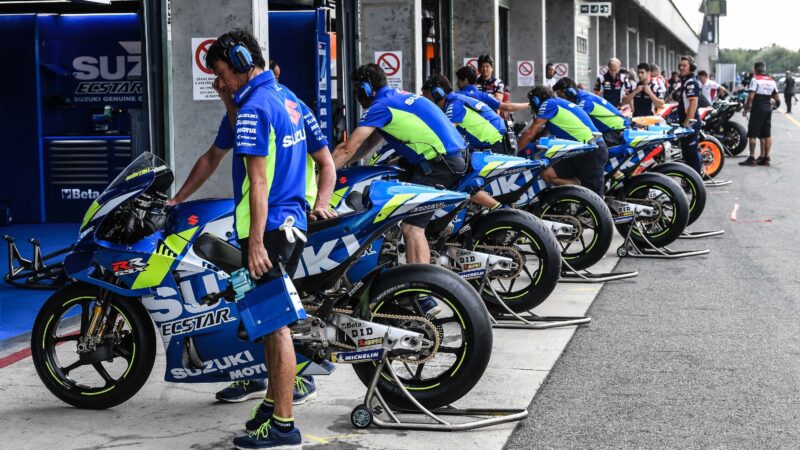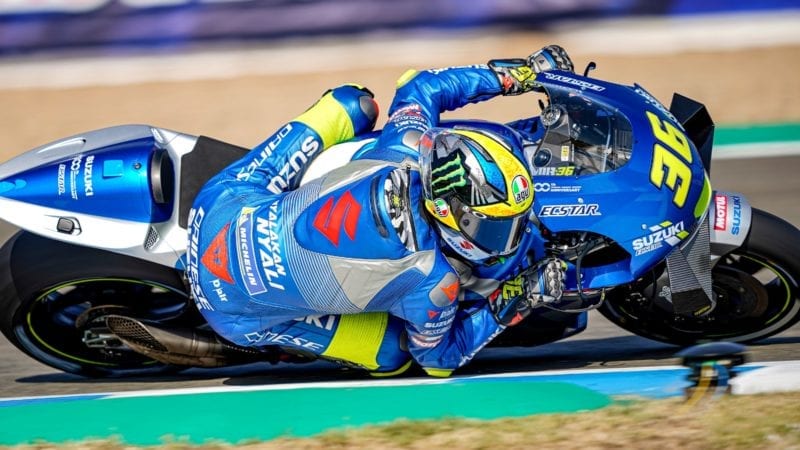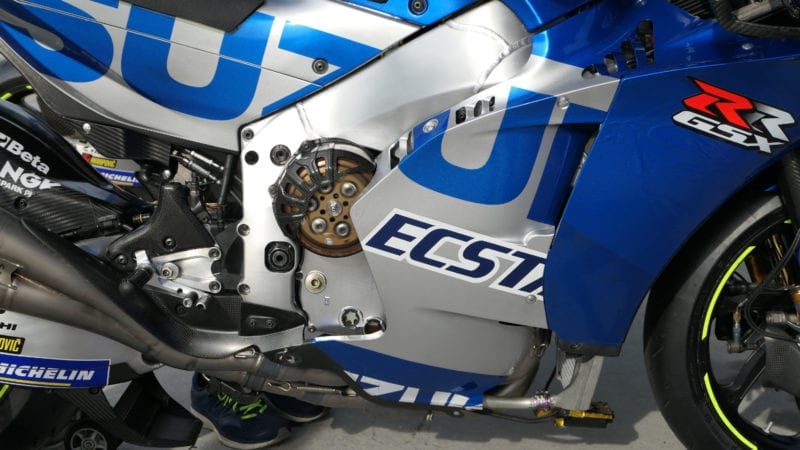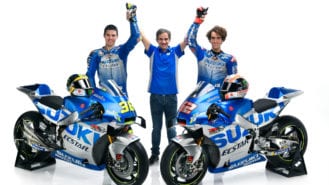Also significant to the bike’s success is Michelin’s latest rear slick, introduced at the start of last season. This tyre has a softer construction so it deflects more for a bigger footprint and more grip, especially on the shoulder, rather than the edge. The tyre naturally works better with the smoother riding technique encouraged by inline-four engines. Both Ducati and Honda had nightmares with this tyre last season, though by the last few races Honda had adapted its RC213V much better to suit its characteristics. Ducati still has work to do with the tyre.
The Suzuki makes its lap times with big, sweeping lines through the corners, using all that speed to exit faster than the V4s, which are slower through the turns and then make their lap times by unleashing the V4’s superior horsepower.
However, if Mir or Rins find themselves battling with a few faster bikes they can find themselves in trouble.
“It can be frustrating at times – last year there were races when Joan had to deal with two or three Ducatis at the same time, which isn’t easy,” adds Carchedi. “We work on our advantages and try to improve our negatives, because that’s what we have and we can’t change it. I think Suzuki does this very well – we know what we have and we try to get the best out of what we have.”
This is another reason Suzuki riders need to qualify better, so they can get the jump on the faster bikes at the start, get out front and run their own lines. This is the one advantage that Yamaha currently has over Suzuki.
Of course, Suzuki won’t leave the GSX-RR entirely unchanged for 2021 but you can be sure that its engineers won’t try anything radical for the new season. This is not their style.

Half a dozen GSX-RRs during the 2019 Czech GP at Brno, belonging to Mir, Rins and Guintoli
Mat Oxley
Rather than look for a quarter of a second improvement in one area of the bike Suzuki always looks for that improvement across all areas, by inching forward with every element of performance, which avoids the complications of creating a positive in one area of performance which nearly always causes a negative in another area.
“Now our bike more or less has a good balance, so to keep this balance we will make every area little bit better,” adds Kawauchi. “Always the most important thing is to extend the bike’s ability in all areas.”
This is the opposite of Ducati, which attaches new parts to its Desmosedici like kids decorating a Christmas tree. And each new part that brings positives also brings negatives, which have to be balanced out.
Suzuki’s test team – led by rider Sylvain Guintoli and crew chief Tom O’Kane – is a vital part of the factory’s conservative development strategy, by filtering out any issues with new parts and cross-checking each improvement across several different racetracks, wherever possible.
Last year’s success was also thanks to subtle tweaks to the chassis, with Suzuki always looking for the best balance of lateral, longitudinal and torsional flex. After several years of using aluminium frames with carbon-fibre sections the GSX-RR’s all-aluminium 2020 frame gave better turning and better grip, allowing the rider to be more precise.
Suzuki was also the first factory to switch to the 2020 Öhlins BDB (bi-directional bleed) rear shock, which gave better traction and more importantly better turning, which is so important to get the bike into the corner-exit phase as soon as possible.
Perhaps this year’s most important job for Kawauchi and Suzuki race chief Shinichi Sahara will be preparing for 2022, when the factory hopes to run more than two bikes in MotoGP, for the first time since the days of the RG500 in the early 1980s.
Ever since Kevin Schwantz and the RGV500 raced in the 1980s and 1990s there have been rumours that Suzuki would put four bikes on the grid, because the more bikes on track the more feedback for the engineers and therefore the greater chances of solving problems and accelerating development.
Last November’s season-ending Portuguese GP at Portimao was perfect example of what happens when you only have two riders to evaluate tyres, settings and so on in just a few hours of practice.
MotoGP had never raced at Portimao, so all six factories had to work extra hard at gathering data for the race. Unlike their Honda, Ducati, KTM and Yamaha rivals Suzuki only had two riders to do all the work. Mir and Rins ended up qualifying 20th and tenth, which left them struggling in the race.
“With the Covid situation it’s very difficult to do something more with our race activities, but if we can do this [run four bikes] it will be in 2022,” says Kawauchi. “We just need the budget and understanding.”



